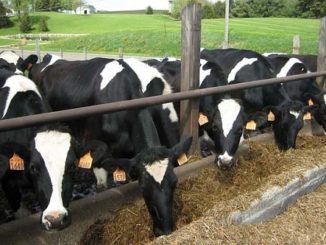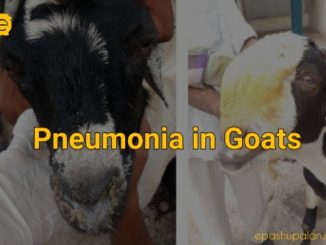Abstract
This article describes how local communities used to use or still use their traditional method or indigenous technical knowledge for treatment purpose in animal husbandry. This is the old practice and still its popularity remains same in some rural area of our country where the people are not be able to treat their animals by veterinarian or where there is not any idea of allopathy/veterinarian among the people. According to WHO, almost 80 % people of under developed or poor developed countries depend on the plant/herb based traditional medicine or sometimes use of other animals for treating the domestic animals. The article focuses on those indigenous methods which are being practised or applied for treating animals and how it is different from the modern method.
Keyword: ITK, animal husbandry, traditional, modern practice, medicinal plants
Introduction
Indigenous methods have been around since the time of human civilization. The word “indigenous” native or local and “knowledge” means skills the acquired through experience and the ways of using plant medicine is sustainable practice. It is the process where the people use their local knowledge. It is locally available, home-made preparation and economically and also easy to administer. Over centuries these are very popular among farmer community. It is built on the basis of experience, trial & error and observation.
Some medicinal plants used for treatment:
- Jaggery product obtained from sugarcane
- Soybeans (Glycine max)
- Turmeric (Curcuma longa)
- Onion (Allium cepa)
- Garlic (Allium sativum)
- Henna leaves (Lawsonia inermis)
Indigenous methods for treating some ailments:
A. treatment of retention of placenta(ROP)
- Half kg jaggery, half kg soyabeans, 10gm sugar are boiled in 5-6litrs of water and given twice daily. Its efficiency is 83.33%.
- Mixture of salt & oil( 150-200gm salt) are fried in hot oils and given to animals 15-30mints after parturition.
B. Increase fertility
- One kg of onions mixed with salt is given to animals on monthly basis for increasing fertility. Garlic can be used.
- Mixture of meethi seeds and 10gm od almonds are boiled in one kg of milk and fed to the animals.
C. Management of prolapse
- Washing with the help of sugar water, cold water. Prolapsed part is washed by cold or sugar water & lubricates with mustard oil and manually put back by any experienced person. Its efficiency is 55%.
D. Repeat breeding
- Drenching of 50 gm Henna powder mixed with water after AI or natural mating.
E. FMD
- Mixture of soot (pring) & mustard oil and apply topically to the infected area.
F. Bone fracture/dislocation
- Paste of turmeric mixed with mustard oil applied & bamboo sticks applicable for immobility of fractured area.
Use of animal body parts to heal diseases
Apart from plants some parts of animals is used to cure diseases of domestic animals. 12 animal species are used such as hen blood is used externally for healing arthritis and fractured bones, hedgehog skin is fumigated for curing mouth diseases of cattle, old bones of camel are burnt ash mixed with water & fed to the animals for curing rheumatoid arthritis.
Necessity of indigenous method
There are many questions that may come to everyone’s mind “why rural people are so much fond of all these indigenous methods or why their priorities are indigenous method over modern method”? Looking for the answer, we realized that there are some good aspects of it. The good sides are-
- Inexpensive
- No residue problem or any other side effects
- It has some scientific basis which can be transferable to other farmer association.
- Farmer friendly
Constraints of these methods
everything has its bad and good sides. Nothing exception happens here. The constraints are-
- Sometimes dose related problem may be there
- Some plants are seasonal, so they are not available every time
- Some practices are harmful
- As all these method are experience based so inexperienced person are not perfect to perform
- They are not fast acting
Comparison of traditional and modern method
Era has changed over time and so have people. Now a day people are more interested to adopt modern things as well as modern technique of treatment. Now all of us are well known about allopathy which is modern treatment method and hence comes the comparison between these two methods. Both methods are right in their place but still if we look, some comparisons comes to everyone’s mind for example indigenous methods are easy to access, developed by local people based on their experiences by using plants or herbs, cost effective, less systematic and modern methods are the result of scientific experiments performed in the laboratory, not so much compatible and when it comes to modern Ayurveda, traditional methods are being modified to make ayurvedic medicine.
Conclusion
As people are busy to use modern techniques of treatment so traditional methods are going to be extinct. Still indigenous methods are used by rural areas of our countries. Researchers have developed traditional method but it is not so much affordable and not easily acceptable to the rural farmers. So we have to overcome all the barriers and all the questions that come to the people’s mind whether modern medicine is useful or not. By communicating with the people, we have to make them understand that modern treatments are as useful as traditional method. Thus modern and traditional methods will remains as it was.
Reference
- scientific name- Wikipedia
- www.farm4trade.com
- www.jaivikkheti.in






1 Trackback / Pingback